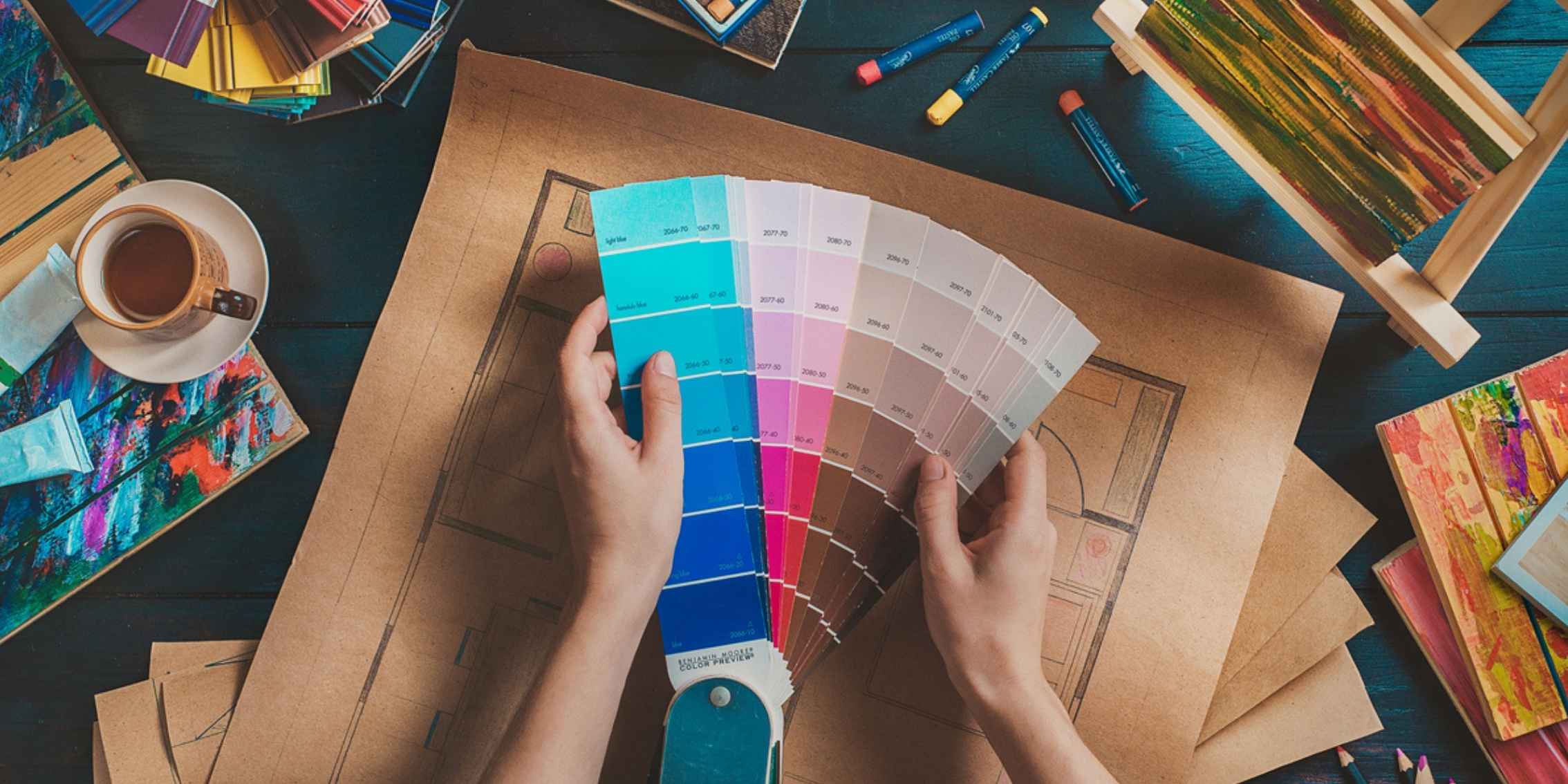Analogous colour schemes might be something you're not familiar with, but you can see them used in many spaces. It's a technique that interior designers use to create visually cohesive and soothing environments. An analogous colour scheme involves using coloursthat are next to each other on the colour wheel, resulting in a naturally pleasing aesthetic. In this guide, we’ll introduce you to the basics of analogous colour schemes and provide tips for incorporating them into your home, helping you transform your space.
An analogous colour scheme consists of three colours positioned next to each other on the colour wheel. For example, a scheme might include blue, blue-green, and green. These colours share a common hue, creating a seamless flow that blends. The characteristics of analogous colour schemes include a harmonious and cohesive look that feels balanced and unified. They are perfect for creating a calm and comfortable environment, ideal for spaces like living rooms, bedrooms, and offices.
Step 2: Select Adjacent
Colours
Choose
one or two
coloursnext to
your primary
colour on the
colour wheel.
These will complement the dominant hue and add variety while maintaining
harmony.
Step 3: Balance the
Colours
Apply
the 60-30-10 rule to balance your
colour scheme:
use 60% of the primary
colour, 30% of
the secondary
colour, and 10%
of an accent
colour. This
distribution ensures that the
colours are
well-proportioned and the space feels balanced.
Use soft, analogous colours to create a welcoming and cosy atmosphere. For example, combine shades of blue and green to evoke a sense of tranquility and comfort.
Opt for restful and serene hues like lavender, blue, and teal to promote relaxation. These colours work well in creating a peaceful retreat.
For a vibrant and lively kitchen, consider a warm analogous palette like yellow, yellow-orange, and orange. This scheme can energise the space and make it more inviting.
In a home office, use cool analogous colours like green, blue-green, and blue to foster concentration and productivity. These colours help create a calm and focused environment.

Image source: 123rf
At The Interior Design Institute, we offer an extensive colour module that dives deep into the psychology and application of colour in interior design. Module 6: Colour covers the properties of colour, how it can change the mood of a space, and how to use the colour wheel to create harmonious schemes. You'll learn about the effects of natural and artificial lighting, understand different paint systems, and discover that there are no bad colours—only bad combinations. This module, along with practical exercises, will help you gain confidence in using colour as a powerful design tool.
The IDI’s course offers expert instruction from experienced and passionate designers, a comprehensive curriculum that equips you with real-world skills, and a supportive community, including an active student Facebook group. You’ll have hands-on practice opportunities to refine your colour selection and design skills, preparing you for a range of career opportunities in the interior design industry.
Mastering analogous colour schemes is a great way to create beautiful, cohesive spaces. Experiment with different palettes and let your creativity flourish. If you're ready to elevate your interior design skills, contact us to enrol today. Join a community of creative minds and turn your passion into a professional skill set that can transform spaces and open doors to exciting career opportunities.